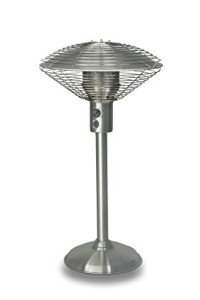The Most Common Patio Heating Systems Debate It's Not As Black And White As You Think
Patio Heating Systems: A Comprehensive Guide
As outdoor home evolve into extensions of our homes, creating a comfy and inviting atmosphere is paramount. One of the most effective ways to achieve this comfort is by executing patio heating unit. These systems enable friends and families to enjoy their outdoor spaces year-round, no matter the chill of the evening air. This article will explore different patio heating systems offered, their features, advantages, and essential factors to consider for choosing the ideal one.
Types of Patio Heating Systems
Patio heating systems been available in various types, each with its own distinct attributes. Below are a few of the most common types:
Type
Description
Pros
Cons
Electric Patio Heaters
These heaters operate utilizing electrical energy and can be found in wall-mounted, portable, and freestanding models.
Easy to install and utilize; immediate heat; safe; low upkeep
Limited heat range; may increase electrical power expense
Gas Patio Heaters
Usually powered by propane or gas, gas patio heaters provide considerable heat output and can cover big locations.
High heat output; can last longer than electrical designs; ideal for big events
Needs gas supply; can be less portable; security concerns with gas leakages
Infrared Heaters
Infrared heaters discharge thermal radiation that straight warms objects and people instead of the surrounding air.
Efficient; instant heat; minimal heat loss; eco-friendly options offered
Restricted area of effect; preliminary expense might be high
Fire Pits
Frequently made of stone or metal, fire pits provide warmth and ambiance, creating a relaxing atmosphere.
Natural ambiance; flexible (cooking option); collect around for social interactions
Safety threats with open flame; require wood or propane supply
Patio Umbrellas with Heaters
These are umbrellas fitted with built-in heating aspects, best for shaded areas.
Practical; combines shade and heating; portable
Less reliable in windy conditions; limited location; can be pricey
Secret Features to Consider
When picking a patio heating system, it is important to examine various functions based upon individual choices, budget, and outdoor space requirements. Here are some aspects to consider:
Heating Capacity: Measured in BTUs (British Thermal Units), this identifies the heat output of the heater. Select a heater with appropriate BTUs for your outdoor size.
Fuel Type: Decide in between electrical, gas, or wood-burning options based on benefit, accessibility, and performance.
Portability: If movement is essential, look for light-weight or wheeled models for simple transportation.
Upkeep: Consider the maintenance needed for each type. Electric heaters normally require less upkeep than gas or wood options.
Security Features: Look for systems with safety cut-offs, protective screens, and products that can hold up against outdoor conditions.
Advantages of Patio Heating Systems
Patio heating systems offer numerous benefits, enabling homeowners to make the most of the use of their outdoor living areas. Some benefits include:
- Extended Outdoor Use: Heaters enable for more time invested outside, even during cooler seasons.
- Increased Comfort: Provide a warm and inviting environment for events, celebrations, or quiet evenings.
- Boosted Aesthetics: Many heater designs include a stylish touch to outdoor decor.
- Increased Property Value: Homes with well-equipped outdoor areas may bring in higher worth and appeal to possible purchasers.
- Versatile Options: With different designs and styles readily available, there is a heating service for every single type of outdoor setting.
FAQs About Patio Heating Systems
1. Just how much does it cost to operate a patio heater?
- Electric Models: This depends on the regional electricity rates and usage time. Usually, running an electric heater can cost in between ₤ 0.10 to ₤ 0.50 per hour.
- Gas Models: Propane expenses differ, but a 20-pound tank typically lasts about 8-10 hours, costing around ₤ 20-₤ 30 to fill.
2. Are patio heaters safe to use?
The majority of modern patio heaters are developed with safety features. Nevertheless, it's important to follow safety protocols, such as adhering to clearances from combustible items, using on stable surfaces, and making sure appropriate ventilation for gas models.
3. Do Gas Heating Solutions operate in windy conditions?
Most patio heaters can provide warmth in light winds, however strong gusts can reduce their effectiveness and safety. For high-wind locations, think about more steady designs or utilize wind shields.
4. Can I utilize a patio heater inside?
Using outdoor heaters indoors is not advised due to carbon monoxide gas threats, particularly with gas heaters. Always verify your heater's desired use standards before setup.
5. How do I keep my patio heater?
Regular maintenance is vital to guarantee durability and efficiency:
- For electrical heaters, inspect and clean the heating component frequently.
- Gas heaters must have their gas lines examined for leaks and filters cleaned.
- Fire pits must be cleaned up after usage and inspected for any residue or ash accumulation.
Patio heating unit play an essential function in transforming outdoor spaces into comfortable and inviting environments. With a variety of options, each with unique advantages and features, homeowners can pick the ideal system based on their requirements, choices, and specific outdoor conditions. By buying a dependable patio heater, one can make the most of enjoyment of their outdoor space throughout the year. Whether hosting summer season barbecues or cozying up on cool evenings, a warmed patio welcomes togetherness, relaxation, and pleasure, making it a valuable addition to any home.
